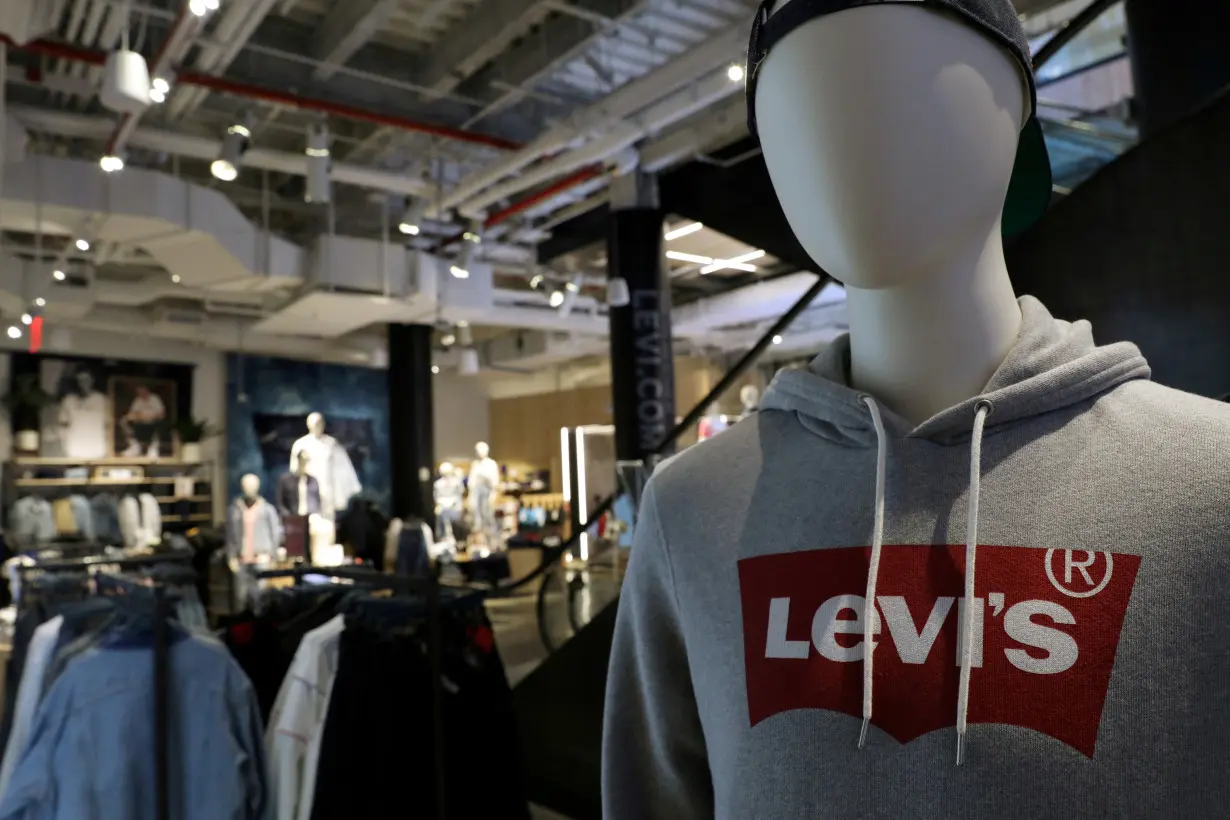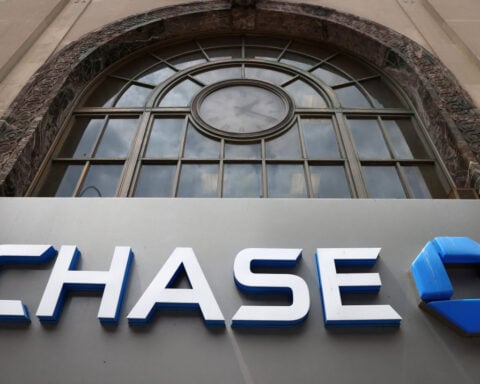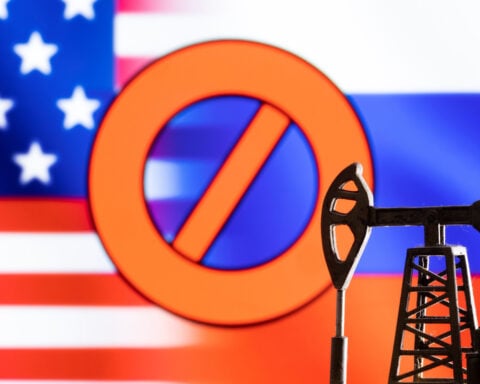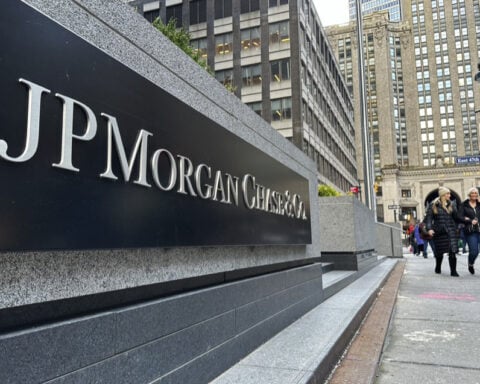(Reuters) - Levi Strauss & Co cut its annual forecasts for the second time on Thursday after missing third-quarter sales estimates as the denim maker reeled from hefty promotions and falling sales at its wholesale channels in North America.
Gloomy consumer spending has hit retailers like Macy's and Nordstrom as high prices and borrowing rates squeeze budgets, denting demand for its denims bottoms, tops and cargo pants.
Unseasonably warm weather through the late summer and fall also hurt sales, particularly of men’s jeans in wholesale channels where Levi’s has less control over product displays, according to Chief Financial and Growth Officer Harmit Singh.
“In our own stores we have a lot more buy-now, wear-now product -- think things like shorts, lighter denim, skirts and dresses,” he said in a call with Reuters on Thursday.
Levi has struggled with declining sales at its overall wholesale business, particularly in North America, which has a higher exposure to the middle-income consumer.
“Value-conscious” shoppers earning between $50,000 and $100,000 are particularly under pressure, Singh said. This has impacted Levi's sales at retail partners such as Walmart and Target, where prices of its Signature and Denizen lines start just below $30.
Net revenue in Levi's Americas segment decreased 5%, even as its direct-to-customer business, which serves a more affluent consumer, rose 12%.
Its margins were also hit by price cuts on certain denim bottoms sold to wholesale retailers like Macy's and Nordstrom in a bid to boost sales among more price-sensitive shoppers.
Levi's adjusted gross margins declined 130 basis points to 55.6% during the third quarter, also hurt by lower full-price selling and higher product costs.
Analysts have said Levi might have to increase promotions and cut prices if wholesale channel sales continue to worsen, which could pressure its margins further.
Levi forecast revenue to be flat to up 1% in fiscal 2023, compared with prior estimate of 1.5% to 2.5% growth.
The company said it expects an adjusted profit per share at the low end of its prior estimated range of $1.10 to $1.20. Analysts on average were expecting $1.12.
Net revenue declined to $1.51 billion in the quarter ended Aug. 27 from $1.52 billion a year earlier, missing analysts' estimate of $1.54 billion, according to LSEG data.
(Reporting by Savyata Mishra in Bengaluru; Kate Masters in New York, Editing by Maju Samuel and David Gregorio)

 US must not become complacent to a growing terrorism threat, a Counterterrorism Center official says
US must not become complacent to a growing terrorism threat, a Counterterrorism Center official says
 Your job may be affecting the quality of your sleep, new study finds
Your job may be affecting the quality of your sleep, new study finds
 Ukraine and Russia launch major strikes on each other with Trump’s inauguration days away
Ukraine and Russia launch major strikes on each other with Trump’s inauguration days away
 Israel supplied Iran with centrifuge platforms containing explosives, top official acknowledges
Israel supplied Iran with centrifuge platforms containing explosives, top official acknowledges
 Look of the Week: Timothée Chalamet adopts London’s most stylish accessory
Look of the Week: Timothée Chalamet adopts London’s most stylish accessory
 Republican bill seeks to curtail US FTC's merger-busting powers
Republican bill seeks to curtail US FTC's merger-busting powers
 UnitedHealth investors await details behind 2025 outlook after exec's murder
UnitedHealth investors await details behind 2025 outlook after exec's murder
 Texas online porn age-verification law goes to US Supreme Court
Texas online porn age-verification law goes to US Supreme Court
 Overtourism was the buzzword of 2024. This summer looks to be just as crowded and chaotic
Overtourism was the buzzword of 2024. This summer looks to be just as crowded and chaotic








